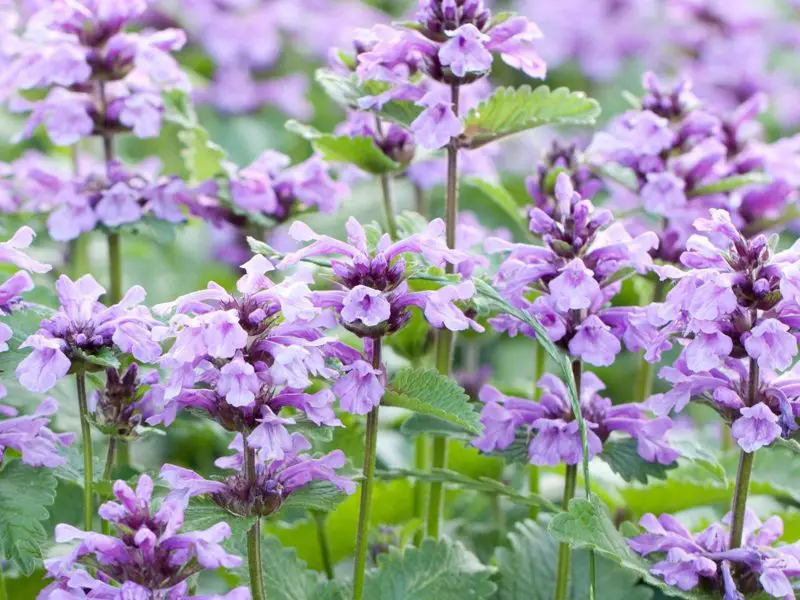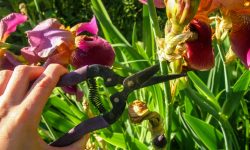Catmint is a beloved perennial known for its aromatic foliage and vibrant purple-blue flowers that attract pollinators throughout the growing season. While it is relatively low-maintenance, proper pruning is essential to keep the plant healthy, encourage repeated blooms, and maintain a tidy, attractive shape in your garden. Without regular trimming, catmint can become leggy, overgrown, and less floriferous, diminishing its visual appeal.
Understanding the right techniques and timing for pruning ensures that catmint thrives year after year. By learning how to prune effectively, gardeners can enjoy a fuller, more resilient plant with long-lasting beauty, vibrant flowers, and a well-structured form that enhances any landscape effortlessly.
Understanding Catmint Growth Patterns

Catmint grows in a low, mounding form, often reaching heights between 18 and 24 inches, with a spread that can exceed three feet. Its woody stems and aromatic foliage make it a standout perennial, particularly when in bloom. Recognizing these growth patterns is the first step in knowing how and when to prune for optimal results. Overgrown stems can obscure the plant’s shape and reduce the intensity of flower displays, so careful monitoring is necessary.
The plant produces soft, gray-green foliage that tends to decline after the main flowering season. Flowers emerge on long, arching spikes, attracting pollinators such as bees and butterflies. The plant naturally dies back in late summer if not deadheaded or pruned, signaling the ideal time for trimming. Understanding this natural cycle allows gardeners to plan pruning schedules that encourage repeat blooms while preventing the plant from becoming untidy or leggy.
Additionally, catmint spreads through underground rhizomes, which can result in dense clumps over time. This growth habit means that periodic rejuvenation is needed to maintain airflow and light penetration within the plant. Pruning helps to remove older stems and stimulate new, vigorous growth. By aligning pruning activities with the plant’s growth patterns, gardeners ensure that catmint remains both visually appealing and structurally healthy, sustaining its charm throughout the growing season.
Tools You Need for Effective Pruning
Having the correct tools is fundamental to successful catmint pruning. Sharp, clean pruning shears are essential for making precise cuts without damaging the plant’s stems. Using dull or dirty tools can cause jagged edges, leading to stress or disease. Gardeners may also consider loppers for thicker, woody stems that standard shears cannot handle efficiently.
In addition to pruning shears, gloves are recommended to protect hands from minor scratches and contact with plant oils. Some gardeners prefer using a small hand saw for very old or woody sections, ensuring that pruning is done safely and effectively. Proper tool maintenance, including cleaning and occasional sharpening, not only extends the lifespan of the instruments but also reduces the risk of spreading pathogens between plants.
Choosing the right tools tailored to the size and maturity of the catmint ensures that pruning is efficient and minimally stressful to the plant. By investing in quality equipment, gardeners can make smooth cuts that heal quickly, encouraging robust growth. Ultimately, using appropriate tools supports healthier catmint while streamlining the seasonal pruning process, allowing for more consistent and attractive results year after year.
When to Prune Catmint for Seasonal Care
Timing is critical when pruning catmint to ensure both aesthetic appeal and plant health. The first significant pruning should occur in early spring, just as new growth begins to emerge. Cutting back old, woody stems at this stage promotes vigorous new shoots and prepares the plant for a full season of blooms. Early spring pruning also helps remove any damaged or winter-weakened sections that could hinder growth.
A second round of trimming can be done after the initial flowering period in mid-summer. Deadheading spent flowers encourages a second bloom while preventing the plant from self-seeding excessively. This intermediate pruning supports a tidy appearance and reduces the risk of disease by improving air circulation. Summer pruning should be moderate to avoid shocking the plant during hot weather.
Finally, a light pruning in late autumn or early winter can remove any remaining stems, providing a clean slate for the following growing season. However, gardeners in colder climates may leave some foliage for winter interest and wildlife support. Pruning according to seasonal cues ensures that catmint maintains a balanced structure, prolongs its flowering period, and sustains long-lasting beauty throughout the year.
Preparing Your Garden for Catmint Pruning
Before starting to prune catmint, it is important to prepare the surrounding garden area to ensure safe and effective trimming. Begin by clearing debris, fallen leaves, and weeds from around the base of the plant. This not only gives you better visibility of the stems and flowers that need attention but also reduces the risk of accidentally damaging neighboring plants. Ensuring a clean workspace allows you to maneuver freely with pruning tools and maintain control over each cut, which is crucial for maintaining the plant’s shape and health.
Next, inspect the soil and plant environment. Catmint thrives in well-draining soil with adequate sunlight, so check for compacted areas or poor drainage that could affect post-pruning recovery. Lightly loosening the soil around the plant promotes root health and encourages new growth after pruning. If other plants are nearby, consider using temporary barriers or markers to protect them from accidental cuts. A well-prepared garden environment sets the stage for efficient pruning while minimizing stress on the catmint and surrounding vegetation.
Finally, gather all necessary tools and ensure they are clean and sharp. Sanitized pruning shears, gloves, and optional loppers for older, woody stems help you make precise cuts that heal quickly. Dull or dirty tools can cause jagged wounds, increasing the risk of disease and slowing recovery. Preparing your garden thoroughly before pruning allows you to focus on technique, maintain the plant’s natural mound shape, and support vigorous, healthy growth. Taking these preparatory steps ensures that your catmint will respond well to pruning and continue to produce lush foliage and abundant blooms.
Step-by-Step Pruning Guide
Preparing Your Catmint for Pruning
Before starting, inspect your catmint for any signs of disease, dead stems, or damaged foliage. Removing unhealthy sections first ensures that the plant can focus energy on new, vigorous growth. Begin by gently clearing the area around the plant to make pruning easier and prevent accidental damage to surrounding plants. Proper preparation also allows you to assess the natural shape of the plant and plan your cuts strategically.
Cleaning the stems of debris and old leaves not only improves visibility but also reduces the risk of spreading pathogens. Watering lightly the day before pruning can make stems more pliable and easier to cut. Ensuring that your pruning tools are sharp and sanitized is essential for making clean cuts, which heal faster and reduce stress on the plant. A well-prepared catmint is more responsive to trimming, leading to healthier foliage and a longer flowering period.
Removing Old and Woody Stems
Start by identifying stems that have become woody or no longer produce flowers. Cut these back to the base to stimulate new shoots from the plant’s crown. Removing older stems prevents the center of the plant from becoming sparse while promoting denser foliage along the edges. Focusing on older growth first allows the catmint to channel nutrients into healthy, vigorous shoots, which will support future blooms. Regular monitoring throughout the season ensures that old stems are removed promptly, keeping the plant balanced and encouraging continuous flowering.
Avoid cutting into young, healthy shoots, as they are essential for flowering in the next season. Cutting at a slight angle just above a leaf node encourages faster healing and promotes branching, which helps the plant maintain a fuller, more attractive shape. Regular removal of woody stems also reduces the risk of fungal infections and pest infestations that can develop in decaying material. By combining careful observation with precise cuts, gardeners can rejuvenate catmint effectively. This ensures a strong foundation for vigorous growth, dense foliage, and extended flowering throughout the season.
Trimming Flowering Stems
After the initial bloom, trim spent flowers just above a set of healthy leaves. This deadheading technique prevents seed formation while encouraging the plant to produce a second wave of blooms. By focusing only on the flowering stems and leaving the main structural stems intact, you help maintain the natural shape and balance of the plant. Regularly inspecting the flower spikes allows you to remove any faded or damaged blooms promptly, which keeps the plant tidy and visually appealing. Consistent deadheading also redirects the plant’s energy from seed production into producing more vibrant flowers, extending the overall flowering season.
Selective cutting of flower spikes not only encourages repeated blooms but also improves air circulation within the plant, reducing the risk of fungal infections and other diseases. Proper airflow allows each stem to develop fully, promoting stronger, healthier growth. Maintaining a routine of trimming spent flowers ensures that your catmint remains vigorous, compact, and productive. This careful approach allows the plant to sustain multiple flowering cycles throughout the season. It keeps your garden colorful and fragrant while preserving the plant’s structure and long-term health.
Shaping and Thinning the Plant
Maintaining the natural mound shape of catmint is essential for both aesthetics and plant health. During pruning, carefully examine the plant for areas where stems are overcrowded or crossing each other. Removing some of these stems from the center improves light penetration and air circulation, which reduces the risk of disease and promotes stronger, healthier growth. Shaping the plant while pruning helps prevent legginess and ensures that flowers are distributed more evenly across the entire plant, creating a balanced and visually appealing mound.
Thinning also reduces competition for nutrients and water, ensuring that each remaining stem receives enough resources to produce lush foliage and abundant blooms. When selectively cutting excess growth, aim to maintain the plant’s natural silhouette, avoiding over-pruning that could alter its characteristic shape. Combining proper shaping and thinning with regular seasonal pruning results in a catmint that is well-structured, vigorous, and resilient against environmental stress. This approach not only enhances the plant’s visual impact in the garden but also supports long-term health and extended flowering potential.
Pruning Young vs. Mature Catmint
Pruning Young Catmint
Pruning young catmint requires a gentle and careful approach to promote strong, healthy growth. For newly planted or juvenile plants, focus on removing damaged, weak, or crossed stems while leaving most of the foliage intact. Light trimming encourages the plant to develop a dense, bushy structure without putting undue stress on delicate shoots. This formative pruning also stimulates branching, which helps the young plant produce fuller foliage and a more abundant bloom cycle in its first flowering season.
In addition to cutting back weak growth, shaping the plant early establishes its natural mound form. Avoid heavy pruning, as young catmint may struggle to recover if too much energy is removed at once. Consistently monitoring and selectively trimming ensures the plant develops evenly, creating a strong foundation for future seasons. With proper care, young catmint will grow vigorously, produce multiple flowering cycles, and form a visually appealing, compact plant that is easier to maintain as it matures.
Pruning Mature Catmint
Mature catmint requires more strategic pruning to maintain vitality and extended flowering. Older plants often develop woody stems and crowded areas that can lead to sparse centers or uneven growth. Removing these older stems back to the base encourages new shoots to emerge from the plant’s crown, ensuring dense foliage and a healthier structure. Deadheading spent flowers during the bloom season also helps direct energy toward producing additional blooms instead of seed formation.
Regular pruning of mature catmint helps maintain a tidy, compact mound and improves airflow, reducing the risk of disease. By selectively thinning overgrown sections and cutting back old, unproductive stems, gardeners can rejuvenate the plant while preserving its natural shape. Mature catmint benefits from careful, ongoing maintenance, resulting in vigorous growth, prolonged flowering, and a visually striking presence in the garden year after year.
Common Mistakes to Avoid
Pruning Too Aggressively
One of the most common mistakes gardeners make is pruning catmint too aggressively. Removing more than one-third of the plant at once can shock it, leading to delayed flowering or stunted growth. Aggressive pruning removes vital energy reserves from the plant, leaving it unable to support new shoots or flowers effectively. Gardeners should aim for gradual trimming, removing older or damaged stems while leaving healthy growth intact.
Pruning gradually allows the catmint to maintain its energy balance, promoting denser foliage and repeated blooms throughout the season. Over-pruning can also affect the plant’s natural shape, resulting in an uneven or leggy appearance. By adopting a cautious approach, gardeners ensure that the plant remains vigorous, attractive, and capable of sustaining long-lasting beauty while minimizing stress caused by heavy cutting.
Pruning at the Wrong Time
Timing is crucial when pruning catmint, and doing it at the wrong season is another common mistake. Pruning during extreme summer heat or in late winter cold can stress the plant, slow growth, and reduce flowering potential. Each season has an ideal window for pruning: early spring for structural shaping, post-bloom for deadheading, and light trimming in late autumn if necessary.
Incorrect timing can also disrupt the plant’s natural growth cycle, causing uneven flowering and weaker stems. Understanding the seasonal needs of catmint ensures that pruning encourages health and prolonged blooms. Following the right pruning schedule helps maintain a well-structured, resilient plant while preventing avoidable stress and damage that may compromise both aesthetics and vitality.
Using Dirty or Dull Tools
Using dirty or dull tools is a frequent error that can harm catmint. Unclean tools may transmit fungal spores or bacterial infections, while dull blades create jagged cuts that take longer to heal. Both issues can weaken the plant and increase susceptibility to pests and disease. Cleaning and sharpening pruning shears before use ensures smooth, clean cuts, reducing plant stress and promoting quick recovery.
Proper tools also make pruning safer and more efficient. Sharp, well-maintained instruments allow gardeners to target only the stems that need trimming without accidentally damaging healthy shoots. Investing time in tool maintenance protects both the catmint and the gardener. It supports healthy, attractive plants capable of producing abundant flowers throughout the growing season.
Neglecting Regular Maintenance
Another common mistake is neglecting regular pruning and maintenance. Allowing catmint to grow unchecked can lead to leggy stems, sparse blooms, and overcrowded growth that reduces airflow and sunlight penetration. Neglecting deadheading also encourages seed formation, which diverts energy away from flower production and can result in early decline.
Consistent maintenance ensures a tidy, vibrant plant with long-lasting blooms. Regular pruning keeps the foliage dense, flowers prolific, and the plant resilient against environmental stress. Establishing a seasonal care routine, including inspecting stems, deadheading, and thinning, promotes plant health. This ensures catmint remains a standout feature in any garden.
Seasonal Pruning Schedules for Maximum Blooms
Timing is essential when pruning catmint to ensure consistent flowering and healthy growth. In early spring, prune any winter-damaged or dead stems back to the base. This first round of pruning removes old, unproductive growth and stimulates fresh shoots, setting the stage for the upcoming bloom season. Spring pruning also allows gardeners to shape the plant before it produces new foliage, ensuring a well-structured mound that supports both aesthetics and optimal airflow.
After the initial bloom in late spring or early summer, deadheading spent flowers encourages a second wave of blooms. Trim the flowering stems just above a healthy set of leaves, leaving the main structural stems intact. This post-bloom pruning not only prolongs the flowering period but also prevents seed formation, directing the plant’s energy toward producing more vibrant flowers. Performing this task regularly throughout the season keeps the catmint tidy, vigorous, and capable of sustaining multiple flowering cycles.
Light pruning in late summer or early autumn can prepare catmint for the colder months. Remove any weak or overgrown stems to maintain the plant’s shape and promote resilience during winter. Avoid heavy pruning at this stage, as excessive cutting can stress the plant before dormancy. Seasonal pruning schedules tailored to the plant’s growth cycles ensure catmint remains healthy, dense, and visually appealing year after year. Following these carefully timed steps maximizes blooms and encourages long-lasting beauty in the garden.
Pruning for Long-Lasting Bloom
To maximize the flowering potential of catmint, deadheading is a key practice. Removing spent blooms prevents seed formation and directs the plant’s energy toward producing new flowers. Regular attention during the flowering season ensures continuous color and fullness in the garden.
Shaping the plant during pruning also promotes aesthetic appeal. Catmint naturally forms a mound, but selective trimming maintains its symmetry and prevents leggy growth. Balanced pruning encourages uniform flowering and enhances the visual impact in mixed borders or container plantings.
Encouraging repeated bloom cycles through strategic pruning supports long-lasting beauty. By trimming selectively and maintaining plant health, gardeners can enjoy catmint’s vibrant flowers well into late summer and early autumn. Consistent care enhances both the plant’s structural integrity and its ornamental value, ensuring that it remains a favorite in perennial gardens.
Caring for Catmint After Pruning
After pruning, catmint benefits from proper care to recover and flourish. Watering should be consistent but moderate, ensuring the soil remains slightly moist without becoming waterlogged. This helps the plant establish new growth and reduces stress after cutting back.
Fertilization after pruning can encourage vigorous development. Applying a balanced, slow-release fertilizer supports leaf expansion and flower production. Avoid over-fertilizing, which can lead to excessive foliage growth at the expense of blooms.
Mulching around the base retains moisture, regulates soil temperature, and suppresses weeds. A thin layer of organic mulch helps protect the roots while the plant recovers. With attentive post-pruning care, catmint bounces back quickly, producing robust stems, vibrant foliage, and abundant flowers, sustaining its long-lasting appeal in the garden.
Watering and Fertilizing After Pruning
Watering Catmint After Pruning
Proper watering is essential for catmint to recover quickly after pruning. Immediately after trimming, provide a thorough but gentle watering to help reduce stress and support new growth. Watering ensures that the plant’s roots can absorb sufficient moisture, which is critical for the development of fresh shoots and vibrant flowers. Avoid overwatering, as excessive moisture can lead to root rot or fungal issues, particularly in densely pruned areas where airflow may be reduced.
Maintaining consistent moisture throughout the growing season is equally important. Monitor the soil regularly, especially during hot or dry periods, and water when the top inch feels dry. Deep, infrequent watering encourages roots to grow stronger and deeper, making the plant more resilient to environmental stress. By balancing moisture levels, gardeners can ensure that catmint recovers effectively from pruning while remaining healthy and floriferous.
Fertilizing Catmint After Pruning
Fertilizing after pruning provides the necessary nutrients to support vigorous regrowth and extended flowering. Applying a balanced, slow-release fertilizer shortly after trimming helps replenish the nutrients that the plant may have used for flowering and encourages new shoots. Avoid over-fertilizing, as this can lead to excessive leafy growth at the expense of blooms. Focus on feeding the plant in moderation to maintain a balance between foliage and flowers.
Organic options, such as compost or well-rotted manure, can also enhance soil health while providing essential nutrients. Incorporating a thin layer around the base of the plant improves soil structure and supports root development. By combining careful fertilization with proper watering, catmint can recover quickly from pruning, producing lush, healthy foliage and abundant flowers throughout the season. These steps ensure long-lasting beauty and overall garden vitality.
Propagating Catmint Through Pruning
Pruning can also serve as a propagation technique for catmint. Healthy cuttings taken during early summer can root easily in soil or water, creating new plants for other garden areas. Selecting vigorous stems with several leaf nodes improves rooting success.
Stem cuttings should be trimmed just below a node and placed in a well-draining medium. Keeping them in indirect light and slightly moist conditions encourages root development. After a few weeks, rooted cuttings can be transplanted into the garden, expanding your catmint collection while maintaining genetic consistency.
Using pruning as a propagation method allows gardeners to rejuvenate older plants while sharing or multiplying catmint across the landscape. This approach integrates seasonal care with garden expansion, providing both aesthetic and practical benefits without the need for specialized equipment or complex techniques.
Pests and Diseases Related to Improper Pruning
Improper pruning can leave catmint vulnerable to a range of pests and diseases that affect both plant health and aesthetics. Cutting too aggressively or leaving jagged, unclean wounds provides entry points for pathogens such as fungal spores and bacteria. These infections can cause stem rot, leaf spots, and other diseases that weaken the plant and reduce flowering. Additionally, poor pruning can create dense, overcrowded foliage, which limits air circulation and promotes a humid environment ideal for pests like aphids, spider mites, and whiteflies. Regular inspection of the plant after pruning helps identify any early signs of infestation or infection before they spread extensively.
To prevent problems, always use clean, sharp tools and make precise cuts. Disinfecting pruning shears between plants reduces the risk of transmitting disease, while cutting at a slight angle encourages faster healing and less exposed tissue. Removing dead or diseased stems immediately after pruning also minimizes the habitat for pests and prevents the buildup of fungal spores. Proper pruning techniques directly support the plant’s natural defenses, allowing catmint to maintain vigorous growth and healthy foliage.
Additionally, monitoring the plant post-pruning is crucial. Applying natural or organic pest deterrents, such as neem oil or insecticidal soap, can help manage minor infestations before they escalate. Ensuring adequate spacing between plants, maintaining airflow, and avoiding excessive moisture further reduces susceptibility to pests and diseases. By combining careful pruning practices with ongoing maintenance and observation, gardeners can keep catmint thriving, resilient, and attractive throughout the growing season, preventing most common health issues caused by improper cutting techniques.
Using Pruned Cuttings for Propagation
Pruned cuttings from catmint can be an excellent way to propagate new plants while maintaining the health and appearance of the parent plant. Choose healthy, non-flowering stems for propagation, as these are more likely to develop roots successfully. Cut sections that are about 4–6 inches long, making clean cuts just below a leaf node. Remove any lower leaves to prevent rot and focus the plant’s energy on root development. Using pruned material in this way adds value to the pruning process, allowing gardeners to multiply their catmint collection without purchasing additional plants.
Once cuttings are prepared, place them in a moist rooting medium such as a mix of perlite and peat moss or a light potting soil. Keep the cuttings in a warm, shaded area with indirect light to encourage root formation. Regularly check moisture levels, ensuring the medium remains damp but not waterlogged. Mist the cuttings occasionally to maintain humidity, which is crucial for successful rooting. Within a few weeks, roots will start to form, and the cuttings can be gradually acclimated to normal growing conditions before transplanting into the garden.
Using pruned cuttings not only helps propagate new catmint plants but also promotes overall garden sustainability. By recycling healthy stems, gardeners reduce waste and make the most of seasonal pruning activities. Once established, these new plants will provide the same lush foliage and abundant blooms as the parent, allowing you to expand your garden efficiently. This propagation approach complements proper pruning practices, ensuring that both existing and new plants thrive with long-lasting beauty and vitality.
FAQ About How to Prune Catmint
How often should I prune catmint?
Catmint should be pruned at least twice a year: once in early spring to remove winter-damaged stems and encourage fresh growth, and once after the first bloom to promote a second flowering. Light trimming in late autumn can maintain tidiness and prepare the plant for the next season.
Can I prune catmint too much?
Yes, pruning more than one-third of the plant at once can stress it, causing delayed blooms or stunted growth. Gradual pruning ensures energy is maintained for healthy development while encouraging vigorous, well-shaped stems.
Should I prune dead flowers on catmint?
Deadheading spent flowers is highly recommended. It prevents seed formation, directs energy toward new blooms, and extends the flowering season. Regular deadheading maintains a tidy appearance and encourages a long-lasting display of vibrant flowers.
What tools are best for pruning catmint?
Sharp, clean pruning shears are ideal for most stems, while loppers or hand saws can handle older, woody sections. Gloves protect hands, and keeping tools sanitized prevents disease transmission, ensuring healthy regrowth and strong blooms.
Can pruning catmint help propagate new plants?
Yes, healthy cuttings taken during pruning can be rooted in soil or water to create new plants. Selecting vigorous stems with leaf nodes improves rooting success, allowing gardeners to expand their catmint collection efficiently.
Conclusion
Pruning catmint is an essential practice for maintaining seasonal health and long-lasting beauty. By understanding its growth patterns, using the right tools, and pruning at appropriate times, gardeners can ensure vibrant blooms, dense foliage, and resilient plant structure. Regular pruning enhances the plant’s natural form, encourages repeat flowering, and prevents overgrowth that could compromise its ornamental appeal. With proper care and attention, catmint becomes a low-maintenance, high-impact perennial, providing continuous color and fragrance throughout the growing season. Strategic trimming, combined with post-pruning care and propagation, ensures that this charming herb remains a standout feature in any garden year after year.






